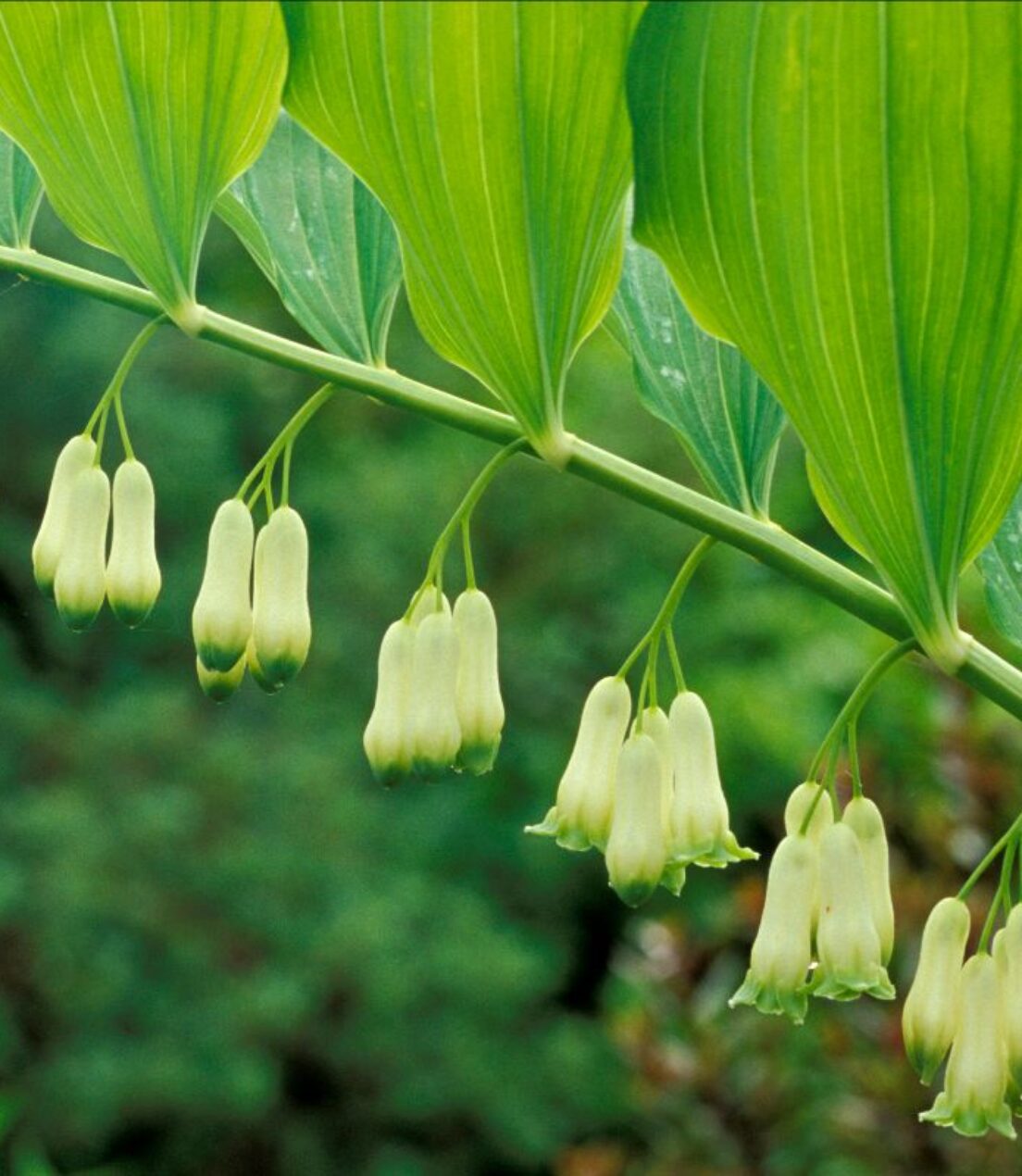The structure and water holding capacity of the soil within shady areas will inform your choice of planting. Considering which plants have evolved to thrive in the conditions present will help with successful plant establishment.
Injecting Colour
The flower colours that work best in shade are whites, pale blues, and pinks. Colour can also be added through leaf variegation and stem colour.
Whites:
The wonderful Polygonatum multiflorum bears clusters of drooping white bells on long arching stems. Growing up to 50-80cm and flowering in May, it is a native of dry, limestone woodlands that adds an instant elegance. Plant in dry shade with Epimedium x youngianum ‘Niveum’ for dancing starry flowers in early summer.


Blues:
Think blue, think Boraginacea. Brunnera macrophylla is top of the list for dry shade. Bright blue forget-me-not flowers bloom in late spring, held over large bristly heart-shaped leaves.
For shady ground cover, Symphytum ‘Hidcote Blue’ is tough and almost impossible to eradicate once established. Smothered in blue and white tubular bells in late spring and early summer, this plant is a magnet for bees.
Pinks:
Paeonia suffruticosa (tree peonies) and herbaceous peonies flower more steadily without the pressure of direct sunlight.
In months where colour might be in short supply, Skimmia japonica ‘Rubella’ will delight with its warm pink flowers set above red margined, deep green leaves. Dark red flower buds produced in autumn provide interest throughout winter until the flowers open in spring. This plant is particular in its preference for shade and neutral to acidic soils.


Leaves:
For a touch of moody drama, the striking burgundy leaves of Heuchera villosa ‘Palace Purple’ will persist over winter and will be followed by fresh, shiny growth in spring. The flowers are light and frothy white stars, held over the leaves by wiry dark stems and followed by rosy bronze seed pods. Plant in a damper soil along with the Japanese forest grass Hakonechloa macra.
Stems:
All the Actaea varieties thrive in shade. Actaea simplex ‘Brunette’ has wonderful dark brown stems. Creamy white small flowers in late summer look stunning over the bronzy foliage below. Although partial to damp soil, they dislike boggy conditions and chalky soils.


Viridis can supply a broad range of quality, cost-effective planting options.
The below list is an outline of plant recommendations for adding colour to areas in shade and semi-shade.
